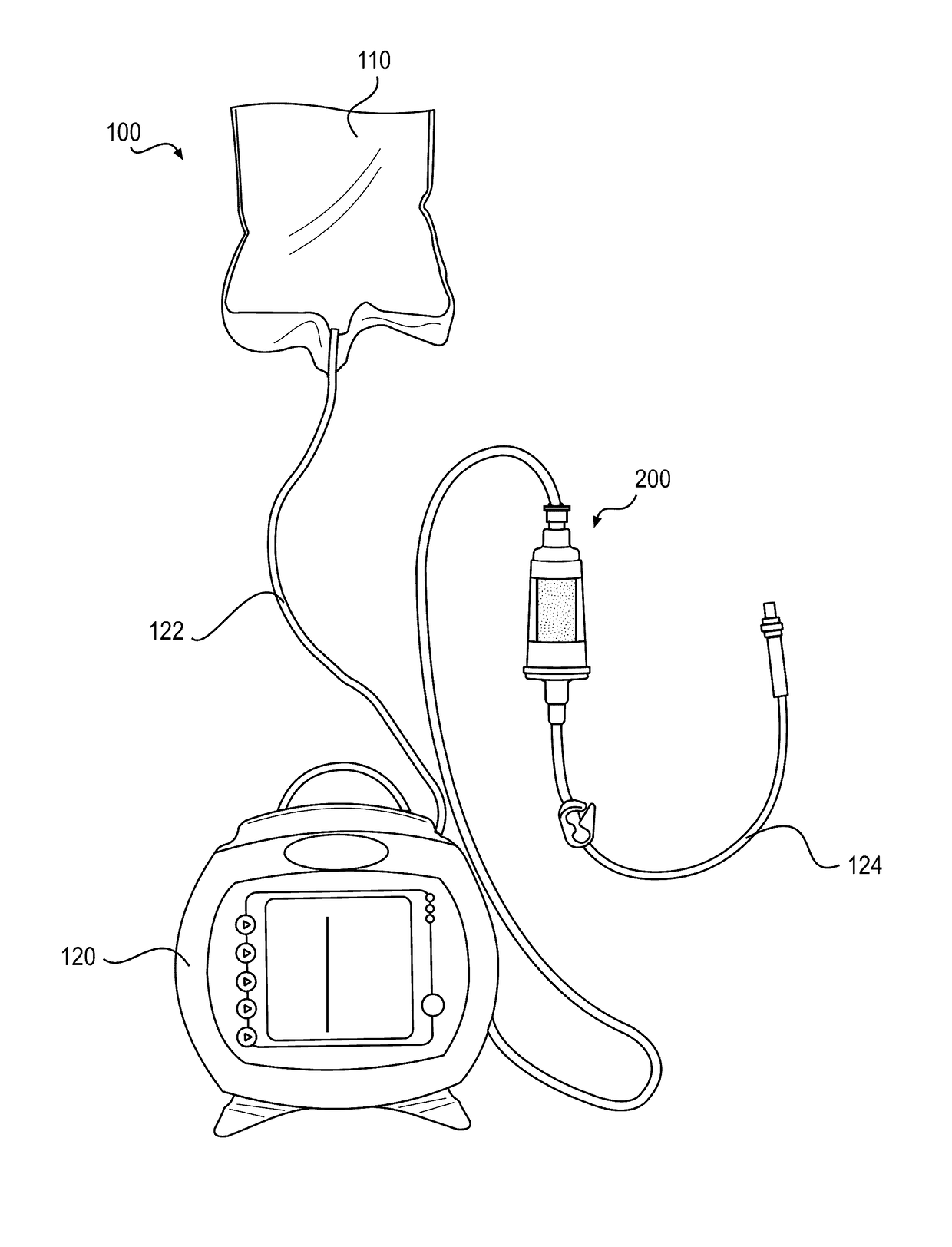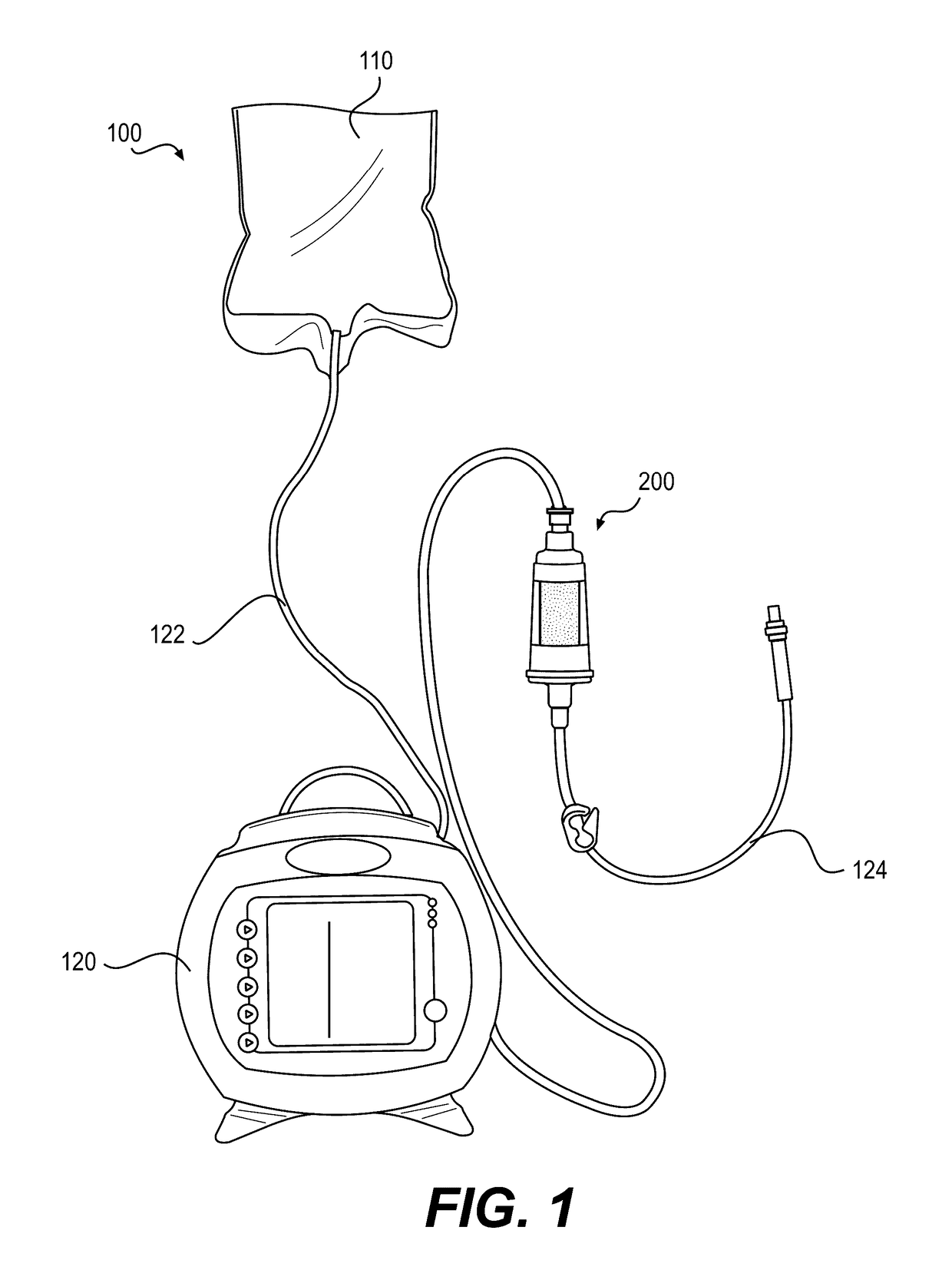Enteral feeding device and related methods of use
a feeding device and feeding tube technology, applied in the direction of catheter, enzymology, pharmaceutical product form change, etc., can solve the problems of unsuitable packaging in supplemental nutritional formulas, inability to convert free fatty acids or fatty acids not attached to other molecules, and high inefficiency of endogenous enzymes in converting ala to dha and epa
- Summary
- Abstract
- Description
- Claims
- Application Information
AI Technical Summary
Benefits of technology
Problems solved by technology
Method used
Image
Examples
example 1
Device Example 1
[0426]An exemplary embodiment of device 200 may include a combination of features, as described below. Device 200 may include a hollow, cylindrical interior region, which may define a chamber 222. Chamber 222 may have an interior diameter of approximately 1.56 cm, a height of approximately 1.94 cm, and a volume of approximately 3.70 mL. The outer surface of device body 210 may also be cylindrical, or may be shaped to facilitate gripping. For example, an outer cross-section of device body 210 may be polygonal, e.g., hexagonal. A length of device body 210 may be approximately 4.42 cm, and a first connector 240 and a second connector 270 may extend from a top and a bottom region of device body 210, respectively. The first and second connectors may be standard, ENFit connectors for use with enteral devices. First connector 240 may be a female connector, and second connector 270 may be a male connector, or vice versa. The female connector may have an interior diameter at ...
example 2
Device Example 2
[0432]Exemplary embodiments of device 200 may also be configured to accommodate faster flow rates of nutritional formulas passing through the device, e.g., to reduce feed time, or to accommodate greater volumes of nutritional formula per feed without compromising hydrolysis efficiency. For example, chamber 222 may have an increased height compared to Device Example 1, above, to accommodate more particles 300 and / or more nutritional formula 110, and the length of the overall body 210 may be taller to accommodate a taller chamber 222. For example, some embodiments may increase the height of chamber 222 by approximately 5 cm (for a total chamber height of approximately 6.94 cm) or by approximately 2.91 cm (for a total chamber height of approximately 4.85 cm), which may permit incorporation of up to approximately an additional 3 g of particles 300 in chamber 222. In other embodiments, chamber 222 may have similar dimensions to those of Device Example 1 or may have the sa...
example 3
Device Example 3
[0435]Exemplary embodiments of device 200 may also be configured for use with pre-term babies, full-term babies, neonates, infants, and / or toddlers. For neonate or infant devices, for example, modifications may be made to device 200 in some embodiments. For example, the volume of chamber 222 may be reduced to approximately ½ to ¼ of the volume of the chamber of the device described in Device Example 1, above. Accordingly, the diameter and / or height of chamber 222 and of the overall device body may be reduced to achieve this lower volume.
[0436]As described above, delivering nutritional formula 110 pre-hydrolyzed using system 100 with device 200 may allow for direct delivery of hydrolyzed and absorbable fatty acids to the GI tract of a subject prior to ingestion. Also, device 200 may be compatible with a wide range of complex, commercially available nutritional formulas and may not affect negatively other nutrients in the nutritional formula. Further, device 200 may al...
PUM
| Property | Measurement | Unit |
|---|---|---|
| mean diameter | aaaaa | aaaaa |
| mean diameter | aaaaa | aaaaa |
| mean diameter | aaaaa | aaaaa |
Abstract
Description
Claims
Application Information
 Login to View More
Login to View More - R&D
- Intellectual Property
- Life Sciences
- Materials
- Tech Scout
- Unparalleled Data Quality
- Higher Quality Content
- 60% Fewer Hallucinations
Browse by: Latest US Patents, China's latest patents, Technical Efficacy Thesaurus, Application Domain, Technology Topic, Popular Technical Reports.
© 2025 PatSnap. All rights reserved.Legal|Privacy policy|Modern Slavery Act Transparency Statement|Sitemap|About US| Contact US: help@patsnap.com



